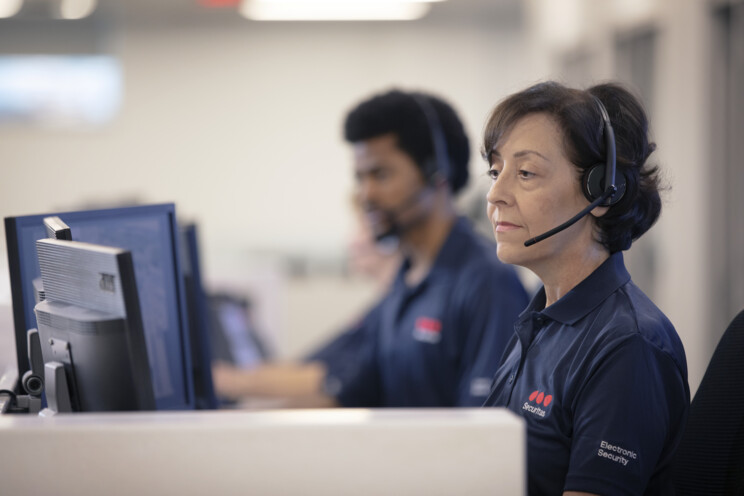Focus on working alone: For more safety in the workplace
Whether they are night porters, security guards, cleaners, or other lone workers, they are at greater risk, especially in emergencies.
More and more professions require employees to work without direct supervision or other people. In this blog article, we will dive deep into lone working, analyze the pros and cons, and look at best practices to ensure safety and well-being in the workplace.
Definition and types of lone work
Lone work is a term commonly used in the world of work. But what does it actually mean?
According to DGUV regulation 100-001 "Principles of Prevention", Section 2.7, lone work occurs when a person carries out work alone, outside of the shouting and visual range of other people.
It is always lone work when another person is absent. The time component is not included in the definition. There are different types of lone work, such as remote work, shift work, working from home, or working in remote areas. Each form has its own specific challenges and benefits.
Who is allowed to work alone?
In principle, working alone is permissible and occurs accordingly frequently. However, there are restrictions and government regulations as well as accident insurance company regulations that prohibit certain jobs.
Do not work alone in dangerous situations or when working with high risk. However, exceptions may be necessary in operational circumstances. In such cases, the employer must take appropriate measures to monitor lone work, depending on the risk of lone work. This monitoring can be guaranteed by technical or organizational measures.
Working alone is prohibited if the risk cannot be minimized either technically or organizationally and if the probability of an emergency is classified as high. Work with a risk of falling, in containers or confined spaces such as silos, as well as fire and explosion-hazard activities are examples of work where working alone is not permitted.
Benefits of working alone
Autonomy and flexibility: Working alone allows employees to complete their tasks independently and adapt their schedules flexibly.
Concentration and productivity: Employees can concentrate better and increase their productivity without disruptive factors.
Personal responsibility and independence: Working alone often requires a high degree of personal responsibility and self-organization. Planning tasks independently, setting priorities, and self-motivation are required here.
Risks of working alone
Safety Risks: Working alone can increase the risk of accidents because immediate help is not available in the event of an emergency or health problem.
Psychological Distress: The lack of social interaction and support can lead to feelings of isolation and loneliness, which can negatively impact psychological well-being.
Overwork: Without clear boundaries between work and personal life, overwork and burnout can easily occur.
Safety measures for lone workers
If a workplace with recurring lone work is important, a separate assessment of the risk potential is required. The employer must identify potential hazards and take appropriate measures such as regular second-person patrols, emergency call systems, timed telephone/radio alarm systems, or constant camera surveillance.
Special risk assessments according to Section 5 of the Occupational Health and Safety Act apply to lone jobs. In particular, it must be ensured that first aid is provided immediately after an accident and that the necessary medical care is arranged. The implementation can range from a telephone request for help to situation-dependent emergency signal systems such as a panic button. Safety experts and company medical staff should definitely be involved in the risk assessment. The lone workers must be instructed accordingly about the special dangers and the necessary measures.
For this reason, the use of a panic button as a security measure is becoming increasingly important. Implementing a panic button for lone workers offers a number of benefits that improve employee safety and well-being. Through rapid response to emergencies, increased security, incident prevention, traceability, and compliance with security policies, organizations can create a safe work environment where lone workers can work with greater confidence. Investing in such security measures is not only an ethical obligation but also an investment in the well-being of employees and the long-term success of the company.
Conclusion
Working alone can have both advantages and disadvantages. While it offers autonomy and flexibility, it also poses risks to the safety and well-being of employees. Companies have a responsibility to take appropriate measures to ensure the safety and support the mental health of their employees.
Through careful risk assessment, training, and the use of technology, employers can maximize the benefits of working alone while minimizing the risks. By consciously addressing the challenges and solutions of working alone, we can ensure that everyone involved can operate in a safe and healthy work environment.
MobileFormPlacement





